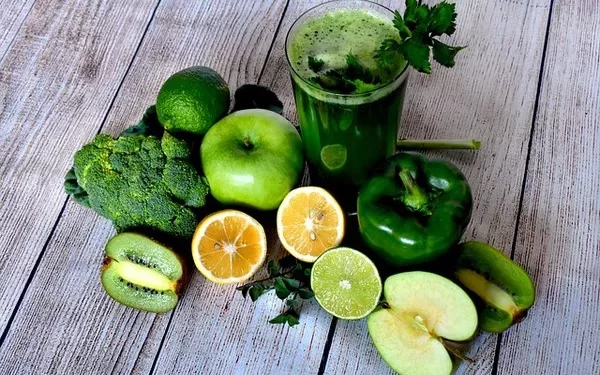Managing diabetes is a multifaceted endeavor that involves not only monitoring blood glucose levels but also maintaining a healthy weight. Weight loss can significantly improve insulin sensitivity, reduce the risk of complications, and enhance overall well-being for individuals with diabetes. This article will explore an effective diet tailored for diabetics aiming to lose weight, highlighting essential food choices, meal planning strategies, and practical tips for success.
Understanding Diabetes and Weight Management
Diabetes, particularly Type 2 diabetes, is closely linked to body weight. Excess body fat, especially around the abdomen, can lead to insulin resistance, making it more challenging to control blood sugar levels. Consequently, achieving and maintaining a healthy weight is vital for managing diabetes effectively.
The Role of Diet in Diabetes Management
Diet plays a crucial role in blood sugar control and weight loss. A well-balanced diet helps stabilize glucose levels, reduces hunger, and promotes healthy eating habits. It’s important to focus on foods that provide essential nutrients while being mindful of carbohydrate intake.
Key Nutritional Principles for Weight Loss in Diabetics
Balanced Macronutrients: A balanced diet should include carbohydrates, proteins, and fats. Each macronutrient plays a vital role in health and weight management.
Portion Control: Understanding portion sizes is crucial for managing calorie intake and blood sugar levels. Using measuring cups or a food scale can help.
Low Glycemic Index (GI) Foods: Foods with a low GI are digested slowly, leading to gradual increases in blood sugar levels. Incorporating low GI foods can help control hunger and maintain energy levels.
High Fiber Intake: Fiber-rich foods promote satiety, aid digestion, and help regulate blood sugar levels. Aim for a variety of fiber sources.
Limit Added Sugars and Processed Foods: Reducing consumption of added sugars and highly processed foods can improve blood sugar control and support weight loss.
Foods to Include in a Diabetic Weight Loss Diet
Incorporating a variety of foods into your diet is essential for providing the necessary nutrients while promoting weight loss. Here are key food categories to consider:
1. Non-Starchy Vegetables
Non-starchy vegetables are low in calories and carbohydrates, making them an excellent choice for weight loss. They are high in fiber, vitamins, and minerals.
Examples:
Leafy Greens: Spinach, kale, and collard greens are nutrient-dense and low in calories.
Cruciferous Vegetables: Broccoli, cauliflower, and Brussels sprouts provide antioxidants and fiber.
Other Options: Bell peppers, zucchini, asparagus, and tomatoes are versatile and nutritious.
2. Whole Grains
Whole grains are a great source of complex carbohydrates and fiber. They digest slowly, providing sustained energy and helping to keep you full.
Examples:
Brown Rice: Offers more fiber and nutrients than white rice.
Quinoa: A complete protein that is low on the glycemic index.
Oats: Steel-cut or rolled oats are excellent for breakfast, providing fiber and nutrients.
Whole Grain Bread: Look for options with minimal added sugars.
3. Lean Proteins
Including lean proteins in your diet is essential for muscle maintenance and satiety. Proteins have little impact on blood sugar levels.
Examples:
Skinless Poultry: Chicken and turkey provide high protein with low fat.
Fish: Fatty fish like salmon and mackerel are high in omega-3 fatty acids, which are beneficial for heart health.
Legumes: Beans, lentils, and chickpeas are great sources of plant-based protein and fiber.
Tofu and Tempeh: Excellent vegetarian protein options.
4. Healthy Fats
Healthy fats can aid in weight loss by promoting satiety and supporting overall health. Opt for unsaturated fats instead of saturated or trans fats.
Examples:
Avocados: High in monounsaturated fats and fiber, they can help control hunger.
Nuts and Seeds: Almonds, walnuts, flaxseeds, and chia seeds are rich in healthy fats and protein.
Olive Oil: A healthy fat for cooking and dressings.
5. Fruits
Fruits can be part of a weight loss diet for diabetics when consumed in moderation. Choose low to moderate GI fruits to maintain blood sugar control.
Examples:
Berries: Blueberries, strawberries, and raspberries are packed with antioxidants and fiber.
Apples: High in fiber, apples make a great snack when eaten whole.
Citrus Fruits: Oranges and grapefruits provide vitamins and hydration without excessive sugar.
Cherries: Low in calories and high in nutrients.
6. Dairy and Dairy Alternatives
Incorporating low-fat or non-fat dairy products can provide essential nutrients without excess calories.
Examples:
Greek Yogurt: High in protein and probiotics, it supports gut health.
Low-Fat Milk: Offers calcium and vitamin D while being lower in fat.
Unsweetened Almond or Soy Milk: Low-calorie alternatives that can be fortified with vitamins.
7. Snacks for Weight Loss
Choosing healthy snacks can help curb hunger and prevent overeating at meals. Look for options that are nutrient-dense and filling.
Examples:
Hummus with Vegetables: A satisfying and nutritious snack.
Nut Butter with Apple Slices: A combination of fiber and healthy fats.
Greek Yogurt with Berries: A protein-rich snack that is also delicious.
Meal Planning Strategies
Planning meals can significantly contribute to successful weight loss for diabetics. Here are some effective strategies:
1. Create a Weekly Meal Plan
Planning meals for the week can help you make healthier choices and avoid last-minute unhealthy options. Include a variety of food groups and aim for balanced meals.
2. Prep Meals in Advance
Meal prepping can save time and ensure that healthy options are always available. Prepare ingredients or entire meals ahead of time to make healthy eating more convenient.
3. Monitor Portion Sizes
Use measuring cups or a food scale to keep portions in check. Eating appropriate serving sizes helps manage calorie intake and blood sugar levels.
4. Focus on Whole Foods
Choose whole, minimally processed foods whenever possible. These foods are often more nutritious and satisfying than their processed counterparts.
5. Keep Healthy Snacks on Hand
Having healthy snacks readily available can prevent hunger between meals and help you avoid reaching for unhealthy options.
Practical Tips for Weight Loss Success
In addition to following a nutritious diet, several practical tips can enhance weight loss efforts for diabetics:
1. Stay Hydrated
Drinking plenty of water is essential for overall health and can aid in weight loss. Water can help control hunger and is essential for proper metabolic function.
2. Exercise Regularly
Incorporating physical activity into your routine is crucial for weight loss and overall health. Aim for a mix of aerobic and strength training exercises.
3. Monitor Blood Sugar Levels
Regularly checking blood glucose levels can help you understand how different foods affect your body and assist in making informed dietary choices.
4. Avoid Skipping Meals
Skipping meals can lead to overeating later and destabilize blood sugar levels. Aim for regular meals and snacks to maintain energy and prevent cravings.
5. Get Support
Consider seeking support from healthcare professionals, registered dietitians, or support groups. They can provide guidance, accountability, and motivation.
Foods to Avoid
While focusing on what to include in your diet, it’s equally important to be aware of foods that can hinder weight loss and blood sugar control:
1. Sugary Beverages
Sodas, fruit juices, and sweetened teas can lead to rapid spikes in blood sugar and contribute to weight gain. Opt for water or unsweetened beverages.
2. Refined Carbohydrates
White bread, pastries, and sugary cereals can cause blood sugar spikes due to their high GI and low fiber content. Choose whole grains instead.
3. Processed Foods
Many processed foods are high in unhealthy fats, sugars, and sodium. These can lead to weight gain and increase the risk of diabetes-related complications.
4. High-Sugar Snacks
Candy, cookies, and cakes should be limited due to their high sugar content and low nutritional value. Look for healthier snack alternatives.
5. Fried Foods
Fried foods are often high in calories and unhealthy fats. Opt for baked, grilled, or steamed options instead.
Consulting a Healthcare Professional
It’s essential for individuals with diabetes to consult with a healthcare professional or registered dietitian before making significant dietary changes. They can provide personalized guidance tailored to individual health needs, preferences, and lifestyle factors.
Conclusion
A well-structured diet is a powerful tool for diabetics looking to lose weight and manage their condition effectively. Emphasizing whole foods, balancing macronutrients, and maintaining portion control can lead to successful weight loss while supporting blood sugar stability. With careful meal planning, regular physical activity, and proper hydration, individuals with diabetes can achieve their weight loss goals and improve their overall health. Remember, consulting with a healthcare professional can provide tailored advice and support on your dietary journey.
Related topics:
What Foods to Avoid to Reduce Blood Sugar



























